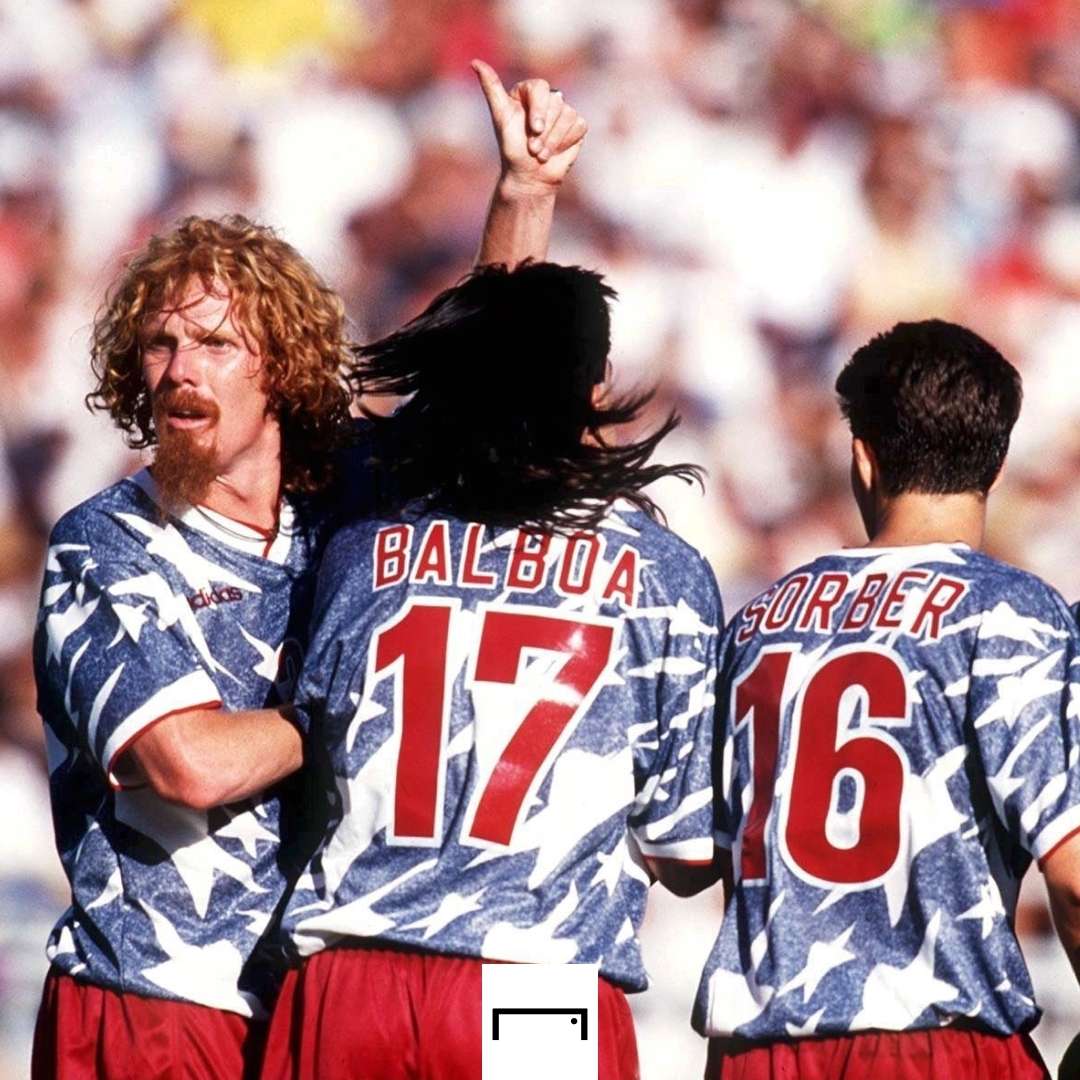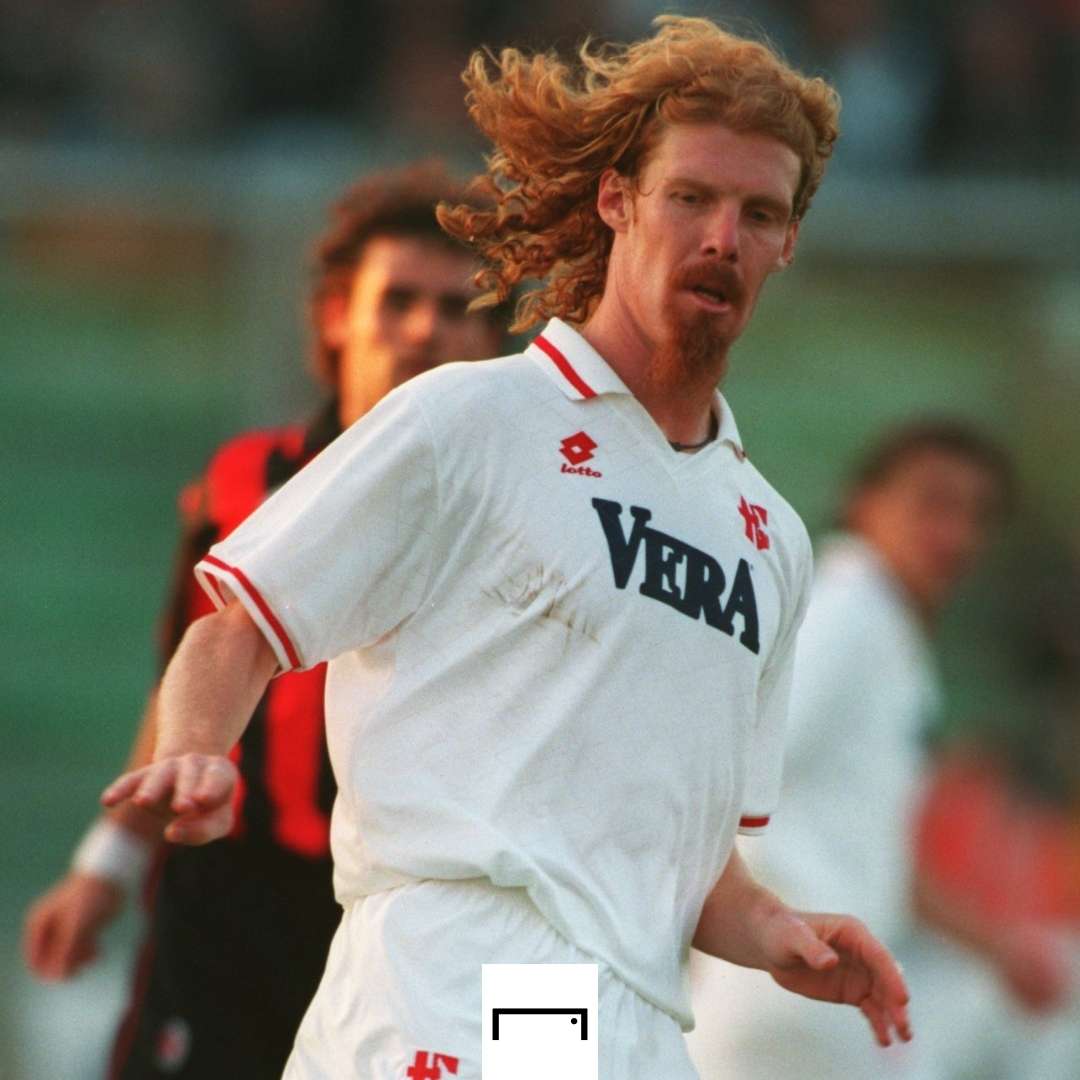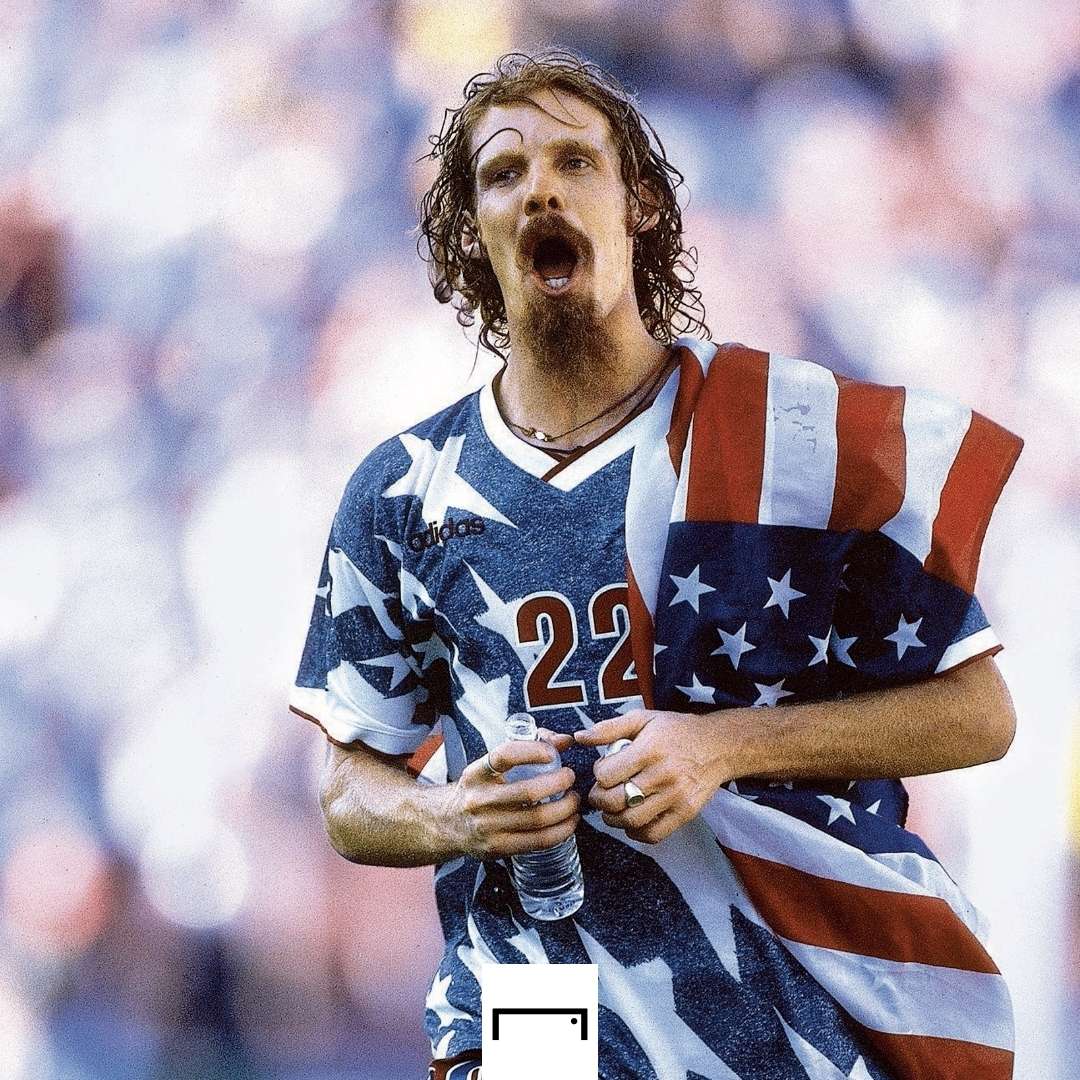Long before stars like Christian Pulisic, Weston McKennie and Gio Reyna began to redefine perceptions with their play in Europe, American soccer was best known globally for a different symbol.
The year was 1994, several years before any of the previously-mentioned U.S. men's national team stars were even born.
That summer, the World Cup was hosted in the United States in the country's first real moment under the spotlight of the world's game.
And from that spotlight, that moment, emerged the symbol. It wasn't a moment, a kit, a chant, a goal. Instead, it was one seemingly endless wave of red hair.
That hair, and the matching beard, captivated the world and gave the U.S. men's national team one of its first recognizable faces. In what was American soccer's first real, defining moment on the global stage, a star had emerged.
The player underneath all that hair was Alexi Lalas, a then-24-year-old central defender that, to this day, is among the more recognizable figures in American soccer history.
And it's not just due to the hair, which has long since been shaved off, but also due to the impact he's had on the game in the years since.
"It was the Wild West," Lalas told the FootballCo Business Podcast when reflecting on the tournament where he became a household name. "I am sitting behind this microphone from my house in Los Angeles because of the World Cup in 1994. It changed my life forever.
"I lived the power of what a World Cup can do for an individual but, more importantly, I saw what it could do for my sport around the world in terms of perception but, more importantly, internally in terms of the perception. It fundamentally changed. It was a marker."
 Getty/GOAL
Getty/GOALLike many young Americans of that era, Lalas' career began without much hope. He was a college star from 1988-91 at Rutgers University but, at the time, the U.S. was still five years away from the introduction of MLS.
In 1991, Lalas left the university to focus on earning a place with the national team, which played at a much different level than the one that will arrive in Qatar this fall.
He earned his first cap in March 1991 against Mexico and his second four days later, but didn't feature again until 1993.
It was during that year he started to become a fixture for the USMNT in the run-up to the 1994 World Cup, which was to be held on home soil.
And it was at that tournament that Lalas, and the USMNT, first achieved mainstream relevance in their home country.
"I tell this story all the time," Lalas began. "A couple weeks before the World Cup, I got on a plane and took my middle seat because this was how we travelled back then as a national team and sat next to an older woman and struck up a conversation. She asked me 'What do you do?' And I told her I play soccer.
"She asked 'What's your job?' Well, I play soccer. And then she asked, 'But what do you do for money?' And I said that I played soccer! Two weeks later, I was in front of a billion people playing in the World Cup."
Lalas started and played all 90 minutes in each of the USMNT's four games, and was given an honorable mention when the post-tournament All-Star Team was selected.
Lalas was, in fact, that good as he and his U.S. teammates captivated American audiences unlike any team that came before them.
From the moment that the USMNT emerged in those famous denim kits, it was clear that this team was different.
Their run began with a 1-1 draw with Switzerland, with Eric Wynalda scoring the USMNT's first goal of the tournament.
Then, the U.S. earned their signature result, even if it has since been marred by tragedy.
Facing off with a Colombia team seen by many as a legitimate contender to win it all, Lalas and the USMNT emerged victorious, with Earnie Stewart scoring for the U.S. alongside Andres Escobar's now-infamous own goal in the 2-1 American triumph.
 Getty/GOAL
Getty/GOALThat game is perhaps best remembered for Escobar's tragic murder shortly after his return to Colombia, but, on the field, it was a game that defined American soccer.
Played in front of 100,000 fans at the Rose Bowl, it was the USMNT's first real statement, and one of the lasting images of that statement is Lalas draped in an American flag with his arms raised high.
"I recognized that this was an opportunity and a platform," Lalas said. "Also, it was the 90s so big, flamboyant, colorful, in-your-face types of aesthetics were part of the 90s.
"I have always considered myself a performer and an entertainer... I project a character and play a character, which is what I did.
"The aesthetic that I had with the hair and the goatee and you add this costume that is big, bold, brash, American with faux denim and stars and stripes, I think it resonated at home and also around the world.
"I knew and we knew as a team that we were introducing ourselves to our own country and also to the world."
The USMNT lost their third group stage game, a 1-0 defeat to Romania, but did enough to advance as a third-place team.
Their run, unfortunately for them, ended in a 1-0 defeat to eventual winners Brazil, who were given everything they can handle by the plucky U.S. team before Bebeto's 72nd-minute goal.
But, even as they exited, the world had very much changed for American soccer, and it had changed for Lalas, too.
 Getty/GOAL
Getty/GOALHe went on to join Serie A side Padova shortly after the tournament, becoming the first American to play in the Italian top flight.
He scored memorable goals against both AC Milan and Inter while in Italy, becoming one of the first Americans to truly make a mark on a top-five league.
In 1996, he returned to the U.S. to join the newly-formed MLS, becoming one of the faces of the league alongside the likes of fellow American soccer icons Eric Wynalda, Tab Ramos and Tony Meola as well as international superstars Hugo Sanchez, Marco Etcheverry, Jorge Campos, Roberto Donadoni and Carlos Valderrama.
In MLS, Lalas played for the New England Revolution, MetroStars, Kansas City Wizards and LA Galaxy before calling it a career in 2004.
His impact, though, has gone far beyond the playing field. He has served as an executive with the San Jose Earthquakes, Metrostars/New York Red Bulls and the LA Galaxy, famously bringing David Beckham to MLS during his tenure in Hollywood.
Beckham's arrival in 2007 was seen as a defining moment for American soccer, one that is still felt all these years later as MLS continues to rise.
That's why Lalas is still remembered by many who care little about American soccer.
He's not American soccer's most talented player, not by a longshot. He also wasn't that 1994 team's true star, with Ramos, Wynalda, Meola, John Harkes, Claudio Reyna and Brad Freidel all going on to have incredible, Hall of Fame-worthy careers of their own.
But that red hair and beard surrounded by the American flag, that's an image that has stayed with the world to this day.
 Getty/GOAL
Getty/GOALThe hair and beard are long gone, replaced by a more tame crew cut. So too is the famous denim jersey, which has been traded in for a suit and microphone in Fox's studio, where the former defender now works as an analyst.
To this day, Lalas remains a fixture of the American game.
He's active on Twitter in addition to his duties as an analyst and frequently chooses to rile up the American soccer community. If there's anything going on in American soccer, Lalas usually has a little bit of fun by making his opinion known about it.
In 2026, American soccer will get their second moment in the spotlight when the World Cup returns to the U.S. 32 years after that famous summer.
Many believe that the tournament will lift American soccer to an even higher stratosphere as the game only continues to grow in popularity thanks to stars like Pulisic, Reyna and McKennie.
But none of that would have been possible if not for 1994, the summer that truly put American soccer on the map, and Lalas, the player that emerged as the face of that team.
"There's an entire generation that, to this day, comes up to me," Lalas said, "and says that that summer fundamentally changed the way they look at the game, and then a few summers later with the 1999 Women's World Cup.
"That is a marker in this incredibly strange and long history of soccer in the U.S.
"It is a huge seminal moment of where things fundamentally changed how we look at the game, how we play the game and how we approach the game."


